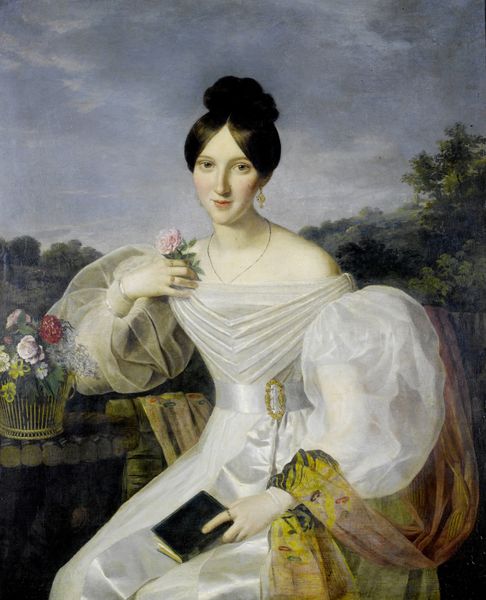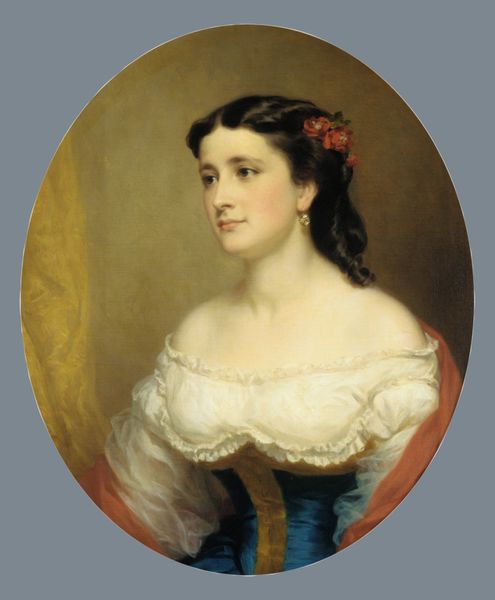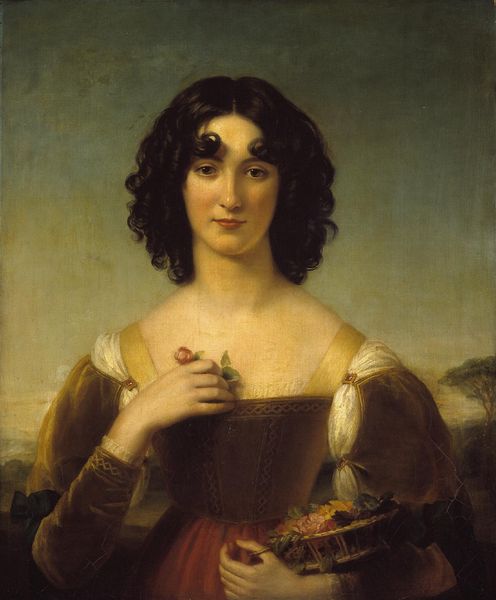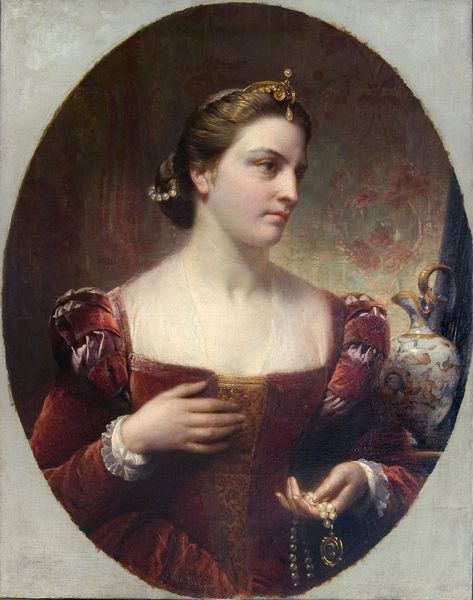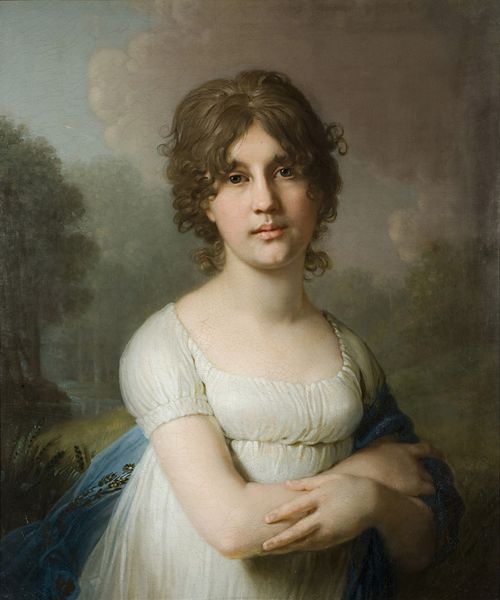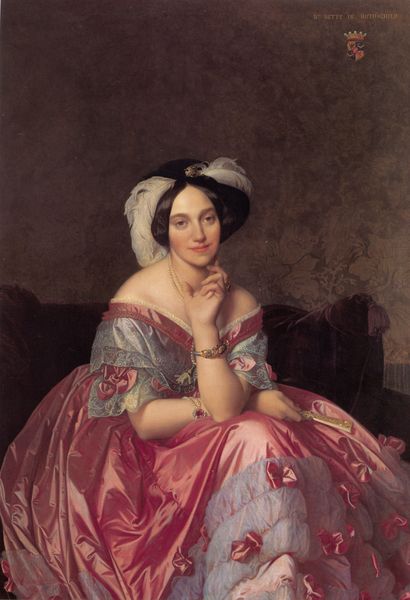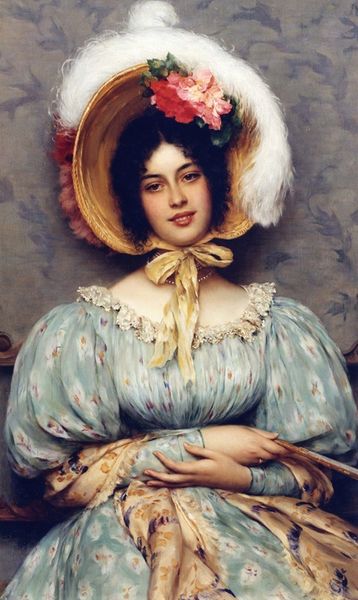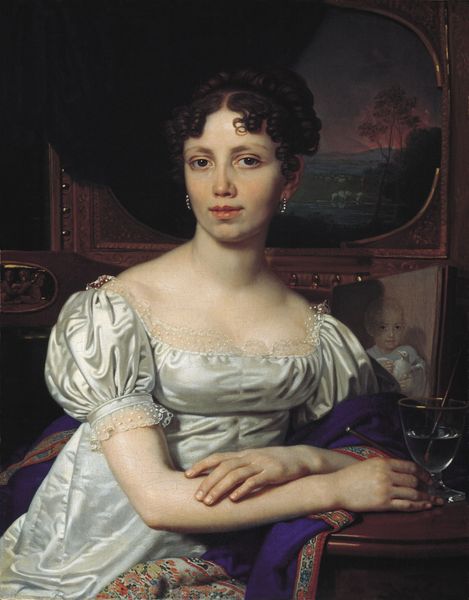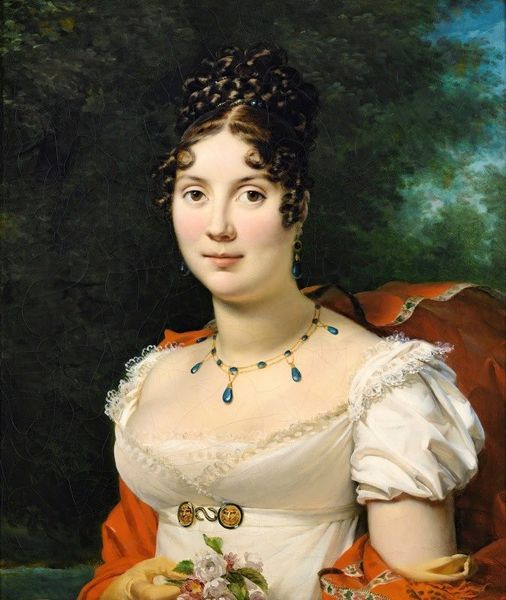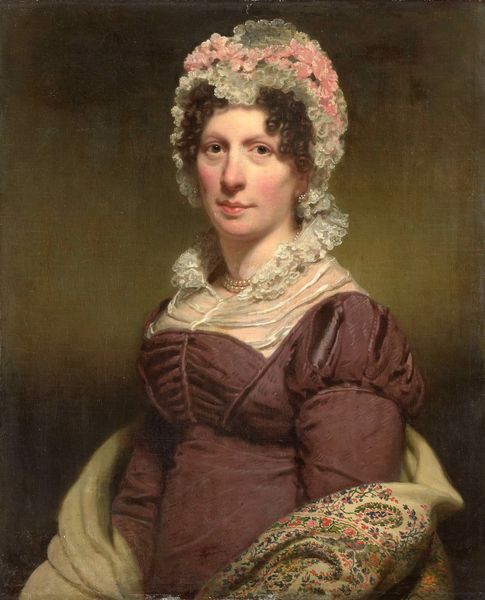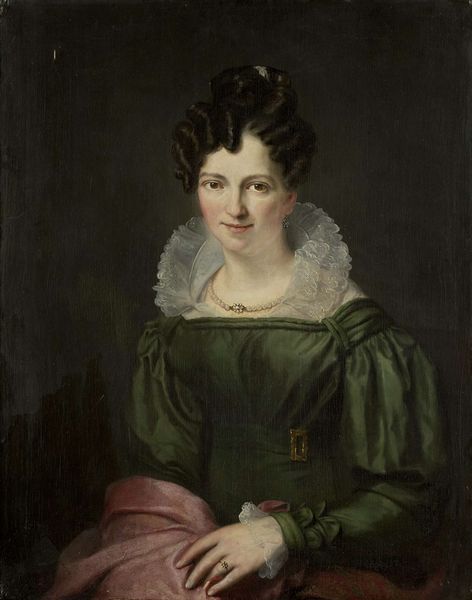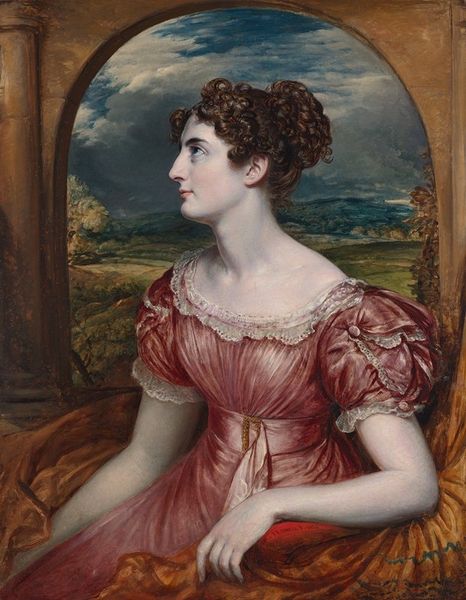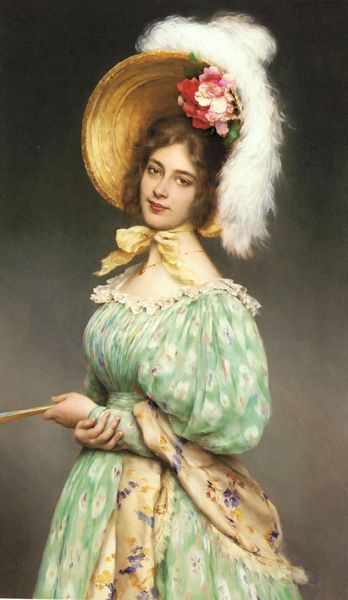
Dimensions: support: 762 x 635 mm
Copyright: CC-BY-NC-ND 4.0 DEED, Photo: Tate
Curator: This is Sir Charles Lock Eastlake’s portrait of Mrs. Charles H. Bellenden Ker, currently residing in the Tate Collections. Editor: It possesses a rather serene quality, wouldn’t you say? The composition directs one’s gaze immediately toward the figure’s face, framed as it is against that pale blue sky. Curator: Indeed. Eastlake, who later became director of the National Gallery, excelled in capturing the restrained elegance favored by the rising middle class. He was interested in the impact this work would have on his market position. Editor: The materiality is quite striking. The brushstrokes, though visible, are incredibly delicate, resulting in a smooth, almost porcelain-like finish to her skin, set against the grapes. Curator: Notice how the idealized natural setting subtly elevates Mrs. Ker’s status, linking her to classical ideals of beauty and virtue prevalent at the time. Editor: A fascinating convergence of aesthetic ideals and social positioning. Curator: Absolutely, something to ponder as we move onward.
Comments
tate 6 months ago
⋮
http://www.tate.org.uk/art/artworks/eastlake-mrs-charles-h-bellenden-ker-n01395
Join the conversation
Join millions of artists and users on Artera today and experience the ultimate creative platform.
tate 6 months ago
⋮
Eastlake's art is characterized by his careful attention to detail, historical accuracy and a high finish. In these respects his work anticipates that of the Pre-Raphaelite Brotherhood, formed in London in 1848. Lady Bellenden Ker was the wife of an eminent legal reformer and educationalist. Eastlake's wife, a well-known scholar, wrote of this picture that 'in certain portraits of ladies [Eastlake] gratified himself [and] the fair sitters by attiring them in a fancy costume. In this way, Mrs Bellenden Ker appeared as an Italian contadina [peasant girl] with a basket of grapes.' Gallery label, August 2004
